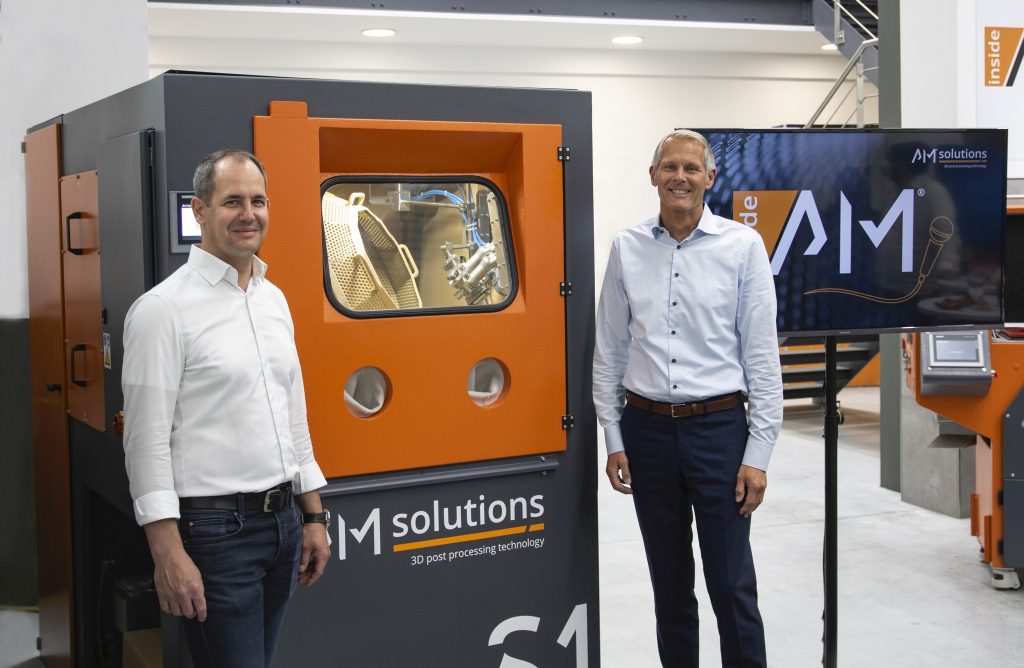Sauber Engineering AG, a division of the historic motorsport team Sauber Group, has told Metal AM that it intends to establish a 3D printing business for producing on-demand classic car spare parts.
Harnessing the knowledge gained from its 28 year-stint as a Formula 1 team, Sauber Engineering is now seeking to set up a service, which offers to reverse engineer and print spares for heritage vehicles. The new venture is designed to address the needs of vintage automobile enthusiasts, whose prized possessions require repair, but can no longer rely on the aftermarket support of native suppliers.
“At Sauber, we have a wealth of knowledge and understanding of automotive engineering,” said Christoph Hansen, Director Technology & Innovation at Sauber Engineering. “Blend this with our experience in AM for high-performance F1 components, and we can offer the historic vehicle sector something unique – a one-stop-shop to replace broken or damaged components that would otherwise mean the end for that car.”
“We can now offer the classic car owner a range of options, from simple plastic covers up to complete gearbox housings or engine parts.”

Sauber’s motorsport heritage
Since it was founded in 1970, Sauber has built up a storied history of motorsport success, in which it has brought the Silver Arrows name back to the race track, and won the 24 hours of Le Mans. Sauber’s F1 team has also taken part in the sport continuously since 1993, bringing home 865 points in the process, and it continues to race under the Alfa Romeo Racing ORLEN banner to this day.
Over the last three years, Sauber’s partnership with Alfa Romeo has seen it steadily integrate additive manufactured parts into its race cars. In 2020, the team’s ‘C39’ edition featured 143 3D printed parts, but this has now been ramped-up to 304 for this season’s ‘C41,’ in a process that is estimated to have reduced their cost by 90%.
The components themselves were built using Additive Industries’ machines at Sauber’s Metal 3D Printing Competence Center, which now houses 13 systems that yield 22,000 parts each year. Leveraging its growing AM capabilities, including three new AM Solutions S1 post-processing systems, Sauber is now seeking to apply its F1 expertise elsewhere, in the restoration of timeless automotive classics.

Renovating an automotive classic
Ahead of the launch of its new service, which will offer clients everything from 3D printed covers to engine parts, Sauber has already been challenged with creating a gearbox housing for a classic Ferrari 340 America Barchetta. Fitted as standard to the car’s rear axle, the broken component could no longer be replaced due to its sheer rarity, while its age meant that its schematics couldn’t be sourced either.
“The gearbox was badly damaged and split across the casing,” explained Hansen. “Our only option was to reverse engineer the housing, which involved a full 3D scan of the structure and then optimization of the CAD file to produce a design that could be additively manufactured.”
During the reverse engineering process, Sauber Engineering’s team leveraged their wealth of automotive expertise to construct a re-designed gearbox, which not only featured the in-built tolerances needed for end-use functionality, but was ultimately capable of outperforming the original.
Built using an Additive Industries MetalFAB1 3D printer at Sauber Engineering’s Zürich facility, the resulting aluminium component took around five days to produce. Once printed, the part was subjected to post-processing and stringent testing, during which it proved to be both lighter and more durable than its authentic Ferrari-manufactured predecessor.
“Our aim with Sauber’s new historic car parts business is to keep these old classics alive, on the road and being used for what they were designed for,” concluded Jonathan Herzog, Sauber’s Head of Project Management & Sales. “By using today’s technology we can achieve this, ensuring these important and much loved historic cars do not disappear.”
3D printing spares and repairs
The convergence of reverse engineering strategies, digitized inventories and 3D printing are increasingly enabling the redesign and manufacturing of rare or discontinued parts. Earlier in 2021, SOLIZE announced that it was working with HP as part of a similar project, to additive manufacture spares for some of Nissan’s NISMO line of heritage sports cars.
In the past, British restoration team, Redesign Sport has also used 3D scanning and CAD modelling to reverse engineer a classic Ferrari. The firm utilized a Creaform device to scan parts of a vintage 1952 Ferrari 225 before outsourcing their production, and fitting them to the vehicle ready for its presentation at the Goodwood Revival festival.
Elsewhere, similar reverse engineering strategies have been deployed by the U.S. Army Aviation and Missile Command (AMCOM) to fully 3D model a UH-60L Black Hawk helicopter. By creating a digital twin of the transport aircraft, the U.S. Army aims to set up a catalog of digital parts, which in turn, could be used as a means of 3D printing some of its more difficult-to-source components.
To stay up to date with the latest 3D printing news, don’t forget to subscribe to the 3D Printing Industry newsletter or follow us on Twitter or liking our page on Facebook.
For a deeper-dive into additive manufacturing, you can now subscribe to our Youtube channel, featuring discussion, de-briefs and shots of 3D printing in-action.
Are you looking for a job in the additive manufacturing industry? Visit 3D Printing Jobs for a selection of roles in the industry.
Featured image shows a Ferrari 340 America Barchetta. Image via RM Sotheby’s.


